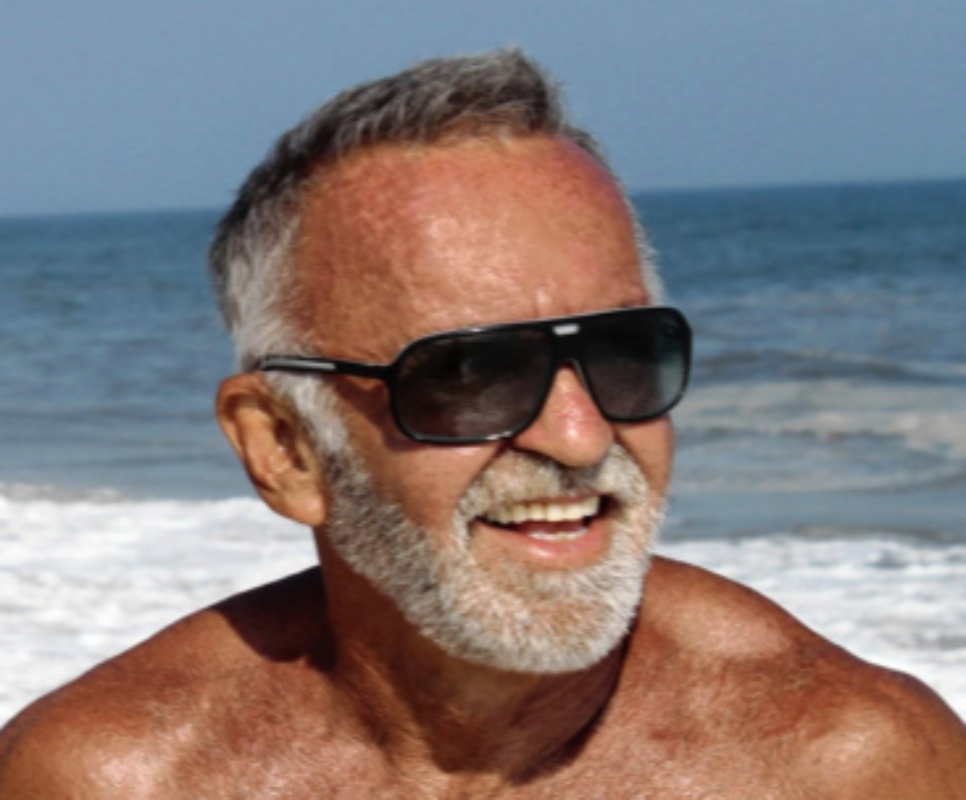The 14th annual Visual AIDS Vanguard Awards (VAVA VOOM) recognize the contributions of individuals who, through their work, talent and dedication, strengthen our communities and reinforce the mission of Visual AIDS. This year Visual AIDS is proud to honor Tom Bianchi, Joyce McDonald and Muna Tseng.
Below, Visual AIDS interviews architect Charles Renfro about Tom Bianchi's photography and influence.
Visual AIDS: When were you first introduced to Tom Bianchi's photography, and what are your immediate impressions of his work?
Charles Renfro: Fire Island has a particular ecosystem that was rarely documented prior to Tom's polaroids. He gave us a record that captured both the intimate and the outrageous elegantly and without judgment. His photographs made behavior that the rest of the world would likely view as an aberration seem natural. With it, he captured a new landscape made of nature, architecture and desire.
Visual AIDS: Tom's Fire Island Polaroids is a landmark photography publication highlighting scenes of gay love, lust and camaraderie. His forthcoming publication of Polaroids centers on his intimate erotic portraits taken in his 63 E 9th St apartment in NYC. How do you see and respond to these Polaroid images of Fire Island and New York?
Charles Renfro: As a resident of Fire Island, I hold with a mixture of possessiveness, pride and fear at the knowledge of what goes on in our self-constructed paradise. At first, Tom's pictures seem to betray the tacit trust that we hold within the community. But the pictures are so full of love and of life that they rise above the spectacle of Fire Island to address much larger aspects of the human condition.
Visual AIDS: Do any of Tom's photographs particularly resonate with you? What are your favorites, and why?
Charles Renfro: I selected his Crisco picture for our house on Fire Island. It's not a representative image from his Fire Island work because there are no bodies in it. But it captures the freedom and possibility that defined Fire Island in that era. It is direct, unapologetic and celebratory. And it sadly reminds us of the war our community fought for over a decade.
Visual AIDS: What have you learned from your friendship with Tom over the years?
Charles Renfro: Tom is one of the most generous and genuine people I know. His good natured curiosity is infectious. He has become a role model for a new generation of Fire Islanders who all hope to age as gracefully and as full of art and life as Tom has.
Visual AIDS: How do you see Tom's creative practice and work relating to the mission of Visual AIDS at the intersections of art, AIDS and activism?
Charles Renfro: Embedded in Tom's work on Fire Island is the the legacy of AIDS, even though that wasn't the point. As AIDS becomes more controllable, Tom's work has again entered the mainstream—it was almost too heart-wrenching to view the work fifteen years ago. Without rubbing our noses in it, his work helps us remember that time, honor those that are not with us and help us prepare for the future.
Visual AIDS: Describe Tom Bianchi in a sentence.
Charles Renfro: Tom is the real deal.
Charles Renfro is a partner at Diller Scofidio + Renfro (DS+R). He joined the studio in 1997 and was named a partner in 2004. Charles led the design for a number of projects including the the James Beard Award-winning restaurant The Brasserie in New York and the Institute for Contemporary Art in Boston. He was also partner-in-charge of Zaryadye Park, a 35-acre park adjacent to the Kremlin in Moscow. Charles has also led a number of academic projects at Stanford University, UC Berkeley, and Brown University and is currently designing new facilities for Columbia University, the University of Chicago, and the University of Toronto. Outside of the Americas, Charles is leading the design of the Museum of Image and Sound in Rio de Janeiro; the Tianjin Juilliard School in China; and Adelaide Contemporary, a new gallery in Australia. Charles is the recipient of WSJ’s 2017 Architecture Innovator Award, the Texas Medal of Arts Award, and is a National Academician. He is a faculty member of the School of Visual Arts.
Tom Bianchi was born and raised in the suburbs of Chicago and graduated from Northwestern University School of Law in 1970. He became a corporate attorney, eventually working with Columbia Pictures in New York, painting and drawing on weekends. His artwork came to the attention of Betty Parsons and Carol Dreyfuss and they gave him his first one-man painting show in 1980. In 1984, he was given his first solo museum exhibition at the Spoleto Festival. After Bianchi's partner died of AIDS in 1988, he turned his focus to photography, producing Out of the Studio, a candid portrayal of gay intimacy. Its success led to producing numerous monographs, including On the Couch, Deep Sex, In Defense of Beauty, and Fire Island Pines. In 1993 Tom co-founded a biotech company with the mission of developing new HIV/AIDS therapies.
